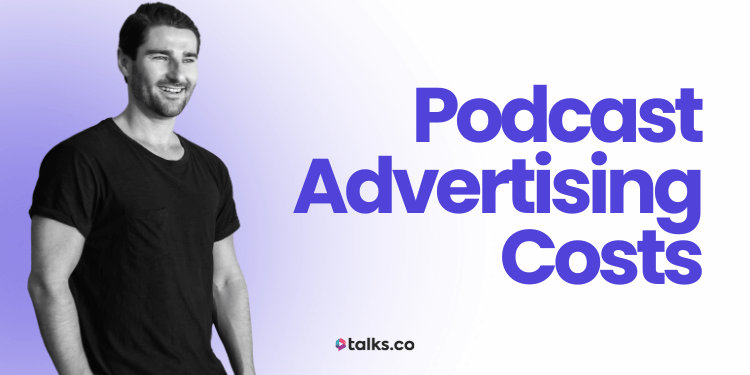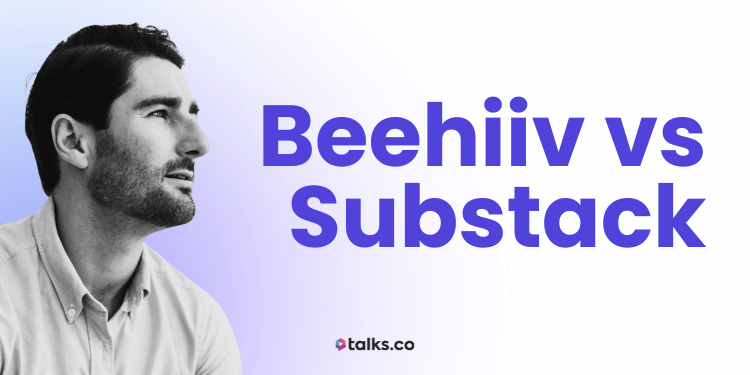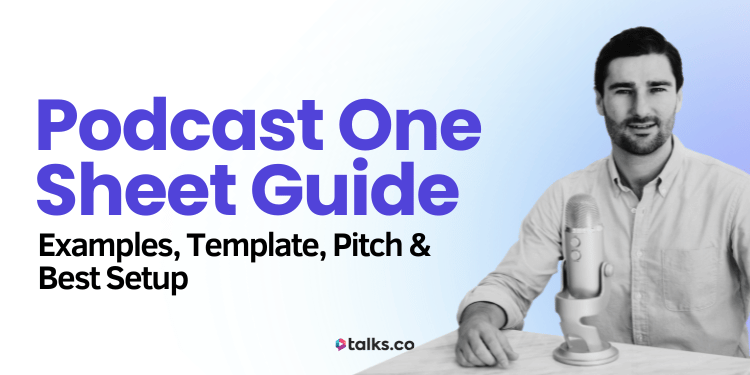You’ve got a message worth sharing and podcasting is one of the best ways to do it.
But when it comes to planning your episodes, promoting them, and staying consistent with content creation, it can start to feel like you’re just guessing your way through.
If you’re after a clear, step-by-step plan to build a podcast content strategy that fits your podcast’s goals, audience, and schedule, this guide is it.
You’ll learn what a podcast content strategy actually is, why it matters, and how to create a successful podcast strategy that gives you structure without boxing you in.
Whether you’re launching your own show or want to be a standout guest on other people’s podcasts, having a content plan helps you stay focused, save time, and grow your visibility in a way that lasts.
Think of it as your game plan so you can show up confident, prepared, and make every episode count.
What Is a Podcast Content Strategy?
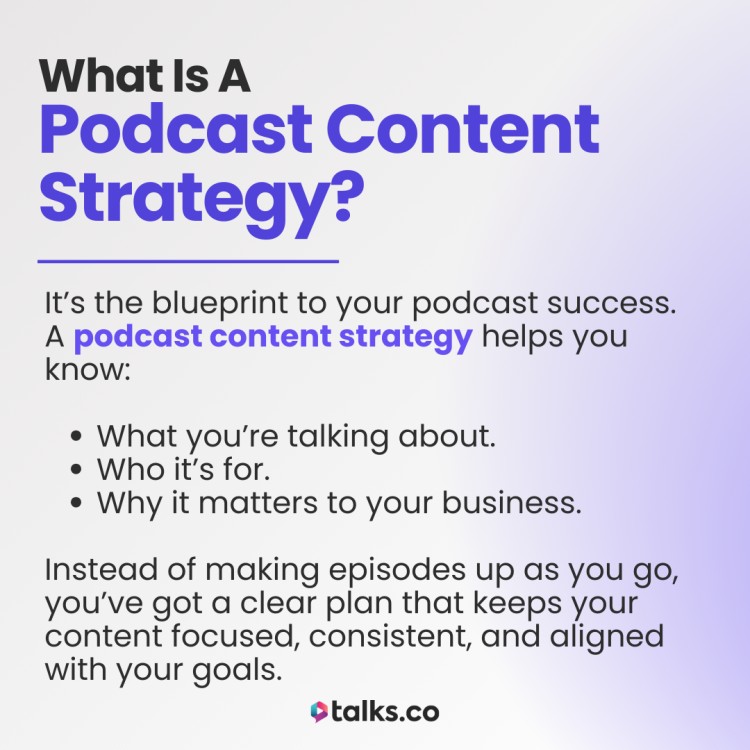
It’s the blueprint to your podcast success. A podcast content strategy helps you know:
- What you’re talking about.
- Who it’s for.
- Why it matters to your business.
Instead of making episodes up as you go, you’ve got a clear plan that keeps your content focused, consistent, and aligned with your goals.
To develop a high-quality content strategy that’s well-thought-out, it typically includes:
- High-quality types of content your podcast listeners actually want.
- A format for the episode content you create (solo, interviews, Q&A, etc.).
- A publishing schedule you can follow.
- A promotion plan for each episode.
- A system that connects your content back to your offers.
Without a strategy, it’s like showing up to a soccer match without a plan. You’re setting yourself up for a rough game. With a strategy, you build trust, save time, attract better clients, and start building momentum.
Why it matters:
A strong strategy helps you:
- Build trust and authority quickly.
- Avoid last-minute scrambling.
- Attract listeners who are a perfect fit for your business.
- Prevent burnout and start gaining real momentum.
Bottom line? A podcast content strategy isn’t just helpful for podcasters; it’s what makes a good podcast and the key to growing your podcast and your business. That’s podcasting 101.
How to Create a Podcast Content Strategy
Starting from scratch? Or tightening up what you’ve already got? This 12-step plan gives you a practical, repeatable strategy you can actually stick to.
Here’s the step-by-step guide to creating a successful podcast content strategy that works for you and your business.
Step 1: Know your end goal
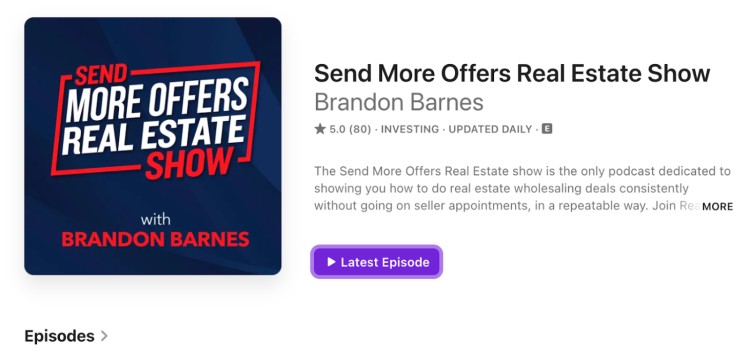
Start with the big picture. What do you want this podcast to do for your business?
Your goal will shape everything: the content, the tone, the CTA, the guests (if any), and even your publishing frequency.
Examples of common podcast goals:
- Attract leads for a service or coaching offer.
- Build authority in a specific type of podcast niche.
- Drive traffic to a course or product.
- Grow a loyal audience and email list.
Once you’re clear on your goal, it gets easier to name your podcast and write a description that speaks to the right people. If you’re stuck, try the Talks podcast name generator and podcast description generator to help you optimize your podcast for search engines and speed up the process.
Action step: Write a one-sentence goal for your podcast.
Example: “I want my podcast to attract health coaches who are struggling to get clients, so I can sell my group program.”
Step 2: Know exactly who you’re talking to

You can’t create engaging web content or develop a podcast structure if you don’t know who it’s for. Get ultra-specific about your target audience.
Skip generic demographics. Dig deeper to create an ideal listener persona to help you start creating podcast audio and video content.
- What do they want?
- What are they stuck on?
- What keywords or phrases do they use to describe their problem?
- What are they searching on Google, YouTube, or Apple Podcasts?
Action step: Write down three to five specific struggles your ideal listener is facing to guide your content creation and make it easier to build a community around your podcast.
Example (for a mindset coach):
- Feels trapped in their 9-5.
- Scared of failing if they take a leap.
- Has consumed all the self-help but nothing’s changed.
Step 3: Lock in your core topics
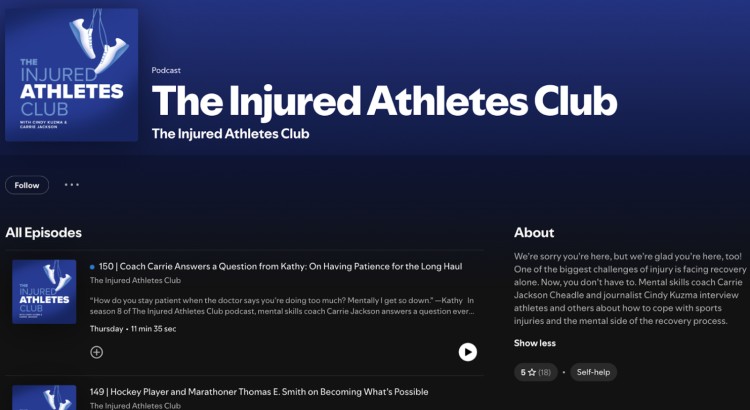
Think of these as the main buckets of your content. Tailor your content per episode to fall under one of these effective content pillars.
Look for the overlap between:
- What your audience cares about.
- What you’re great at.
- What your offer helps with.
Action step: List three to five pillar topics your podcast will focus on.
Example (for a business coach):
- Client attraction strategies
- High-ticket sales
- Mindset for entrepreneurs
- Offer positioning
- Time management for solopreneurs
Step 4: Decide on your episode format(s)
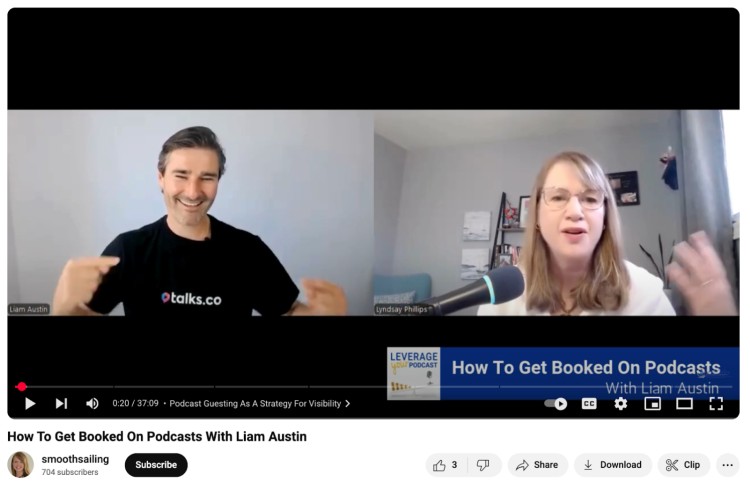
Pick the formats that play to your strengths. You can mix, but choose one primary podcast format to build momentum and consistently create fresh content that resonates.
Popular formats:
- Solo teaching (authority + focus)
- Expert interviews (reach + variety)
- Coaching/demo episodes (conversion + depth)
- Q&A or community episodes (engagement + trust)
Action step: Decide on one main format + one optional secondary format.
Example: 70% solo, 30% interviews.
Step 5: Set your publishing frequency
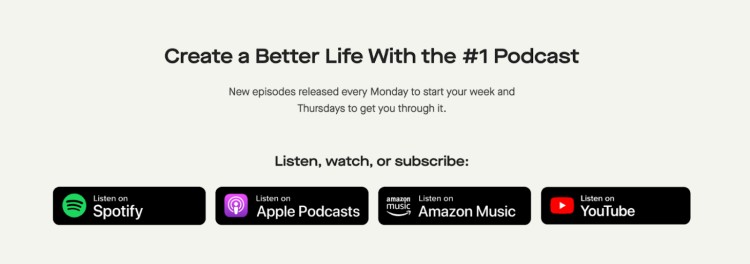
Your publishing schedule is a trust builder. Weekly is usually best, but only if you can commit.
Here’s a quick cheat sheet for thoughtful content planning:
- Weekly: Most common. Best for brand awareness, growth, and momentum.
- Biweekly: Great if you’re balancing other content or a busy schedule.
- Monthly: Only works if episodes are high-value and well-promoted.
Action step: Choose a frequency and stick to it for the next three months.
Step 6: Map out your content calendar
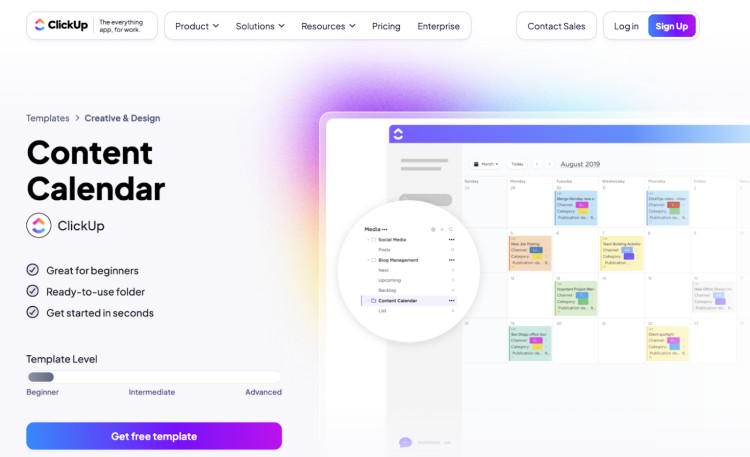
No need for a fancy tool for your strategy to succeed. A simple spreadsheet, ClickUp board, or Google Doc works fine.
Include:
- Episode title or working title
- Episode type (solo, interview, etc.)
- Publish date
- Main CTA
- Notes or podcast outline
Action step: Plan out your next four to six episodes using this structure.
Tip: Start with pillar topics, then plug in timely or relevant ideas.
Step 7: Script your episode outline
Don’t wing it. Rambling kills retention. A clear outline keeps you focused and makes editing easier.
Basic structure to follow when you brainstorm your podcast script:
- Hook (what they’ll learn + why it matters)
- Main teaching points (two to four big ideas or steps)
- CTA (what’s the next best action for the listener?)
Action step: Create a reusable outline template you can copy/paste for each episode.
Step 8: Add a clear call to action (CTA) to every episode
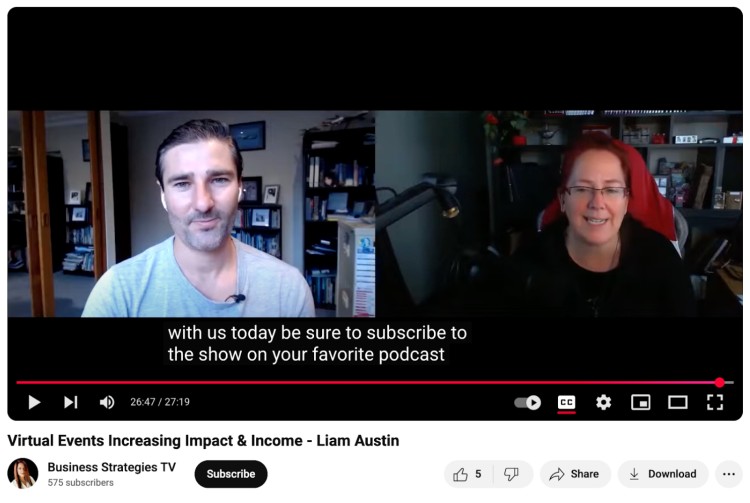
Every episode should guide listeners toward action. Be clear and specific.
Types of CTAs that work:
- Join your email list
- Grab a freebie
- Book a discovery call
- Share your podcast episode
- DM you a keyword to start a conversation
Action step: List two to three go-to CTAs that connect to your goal. Rotate them based on episode content.
Step 9: Repurpose each episode
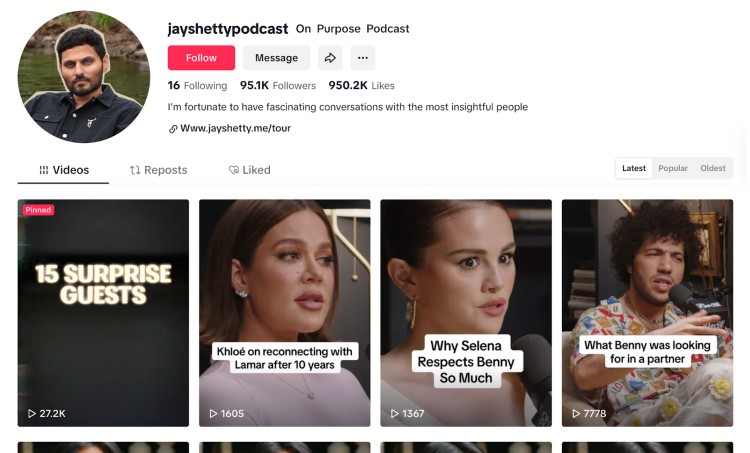
When you repurpose your podcast, this is where strategy pays off. One great episode can create a full week of content.
Ideas for podcast repurposing:
- Pull two to three quotes for graphics.
- Turn highlights into short-form video (Reels, YouTube Shorts, etc.).
- Write a newsletter or blog post around the episode.
- Clip key soundbites into audiograms.
Action step: Choose three repurposing formats you’ll commit to each week.
Step 10: Track what’s working
You need to have a plan and pay attention to your new data so you can lean into what works and improve what doesn’t.
Track:
- Downloads per episode
- Episode completion rates (if available)
- Opt-ins or conversions
- Replies, shares, or DMs tied to specific content
Action step: Set a monthly reminder to review your top three to five performing episodes. Note what good podcast topics and formats worked best.
Step 11: Stay consistent for at least 90 days
It takes time to build an audience, create listener engagement, rank on podcast hosting platforms, and see ROI from your podcast. Most people quit too soon. Don’t.
Action step: Commit to a 90-day sprint. One episode per week. No skipping.
Step 12: Review, refine, repeat
Every few months, pause and reflect:
- Is your goal still the same?
- Are the topics landing?
- Is your CTA converting?
- What felt easy or hard to produce?
Action step: Block off 30 to 60 minutes every quarter to review your strategy and make small tweaks.
Why Do I Need a Podcast Content Strategy?
If your goal is visibility, leads, and consistent income, not just a bunch of random episodes floating around online, then you need a strategy.
It should be part of any podcast starter kit. Here’s why it matters:
- It keeps your podcast focused on results. Without a strategy, it’s easy to drift into “just create and hope it works” mode. With a strategy, every episode has a purpose whether that’s attracting leads, growing your authority, or building trust with future clients.
- It saves you time and headspace. No more wondering what to talk about next week. You’ve got a plan. Topics, formats, guests, promotion, it’s all mapped out in advance.
- It helps you stand out. Most podcasts don’t have a clear strategy. That’s why they fizzle out after ten to fifteen episodes. Having a plan gives you the consistency and clarity others are missing.
- It connects your podcast to your business goals. Your podcast isn’t just content – it’s a growth tool. And it works best when it aligns with your offers, your audience, and the problems you solve.
Without a strategy, you risk:
- Wasting hours creating episodes that lead nowhere.
- Attracting the wrong audience (or none at all).
- Feeling frustrated because the podcast isn’t “working” according to your podcast business plan.
With one, you’ll:
- Know exactly why you’re creating each episode.
- Build momentum instead of burning out.
- Create content that actually attracts listeners and helps you monetize your podcast.
This is how you turn your podcast from “just something you’re doing” into something that actually grows your business.
Podcast Content Marketing to Be Heard
Creating great content is just the start. Marketing your podcast is what gets it heard. And the more intentional you are with your podcast content distribution? The bigger your reach and impact.
Here’s how to market your episodes effectively:
- Treat each episode like a campaign: Share your episodes across multiple platforms (Instagram, LinkedIn, YouTube, etc.) and repurpose them into audiograms, blog posts, and social media snippets.
- Highlight shareable moments: Identify key takeaways or quick wins from each episode your audience will want to share. These could be valuable tips or a memorable quote.
- Repurpose your content: One episode can fuel multiple pieces of content. Repurpose it into newsletter articles, two to three social media posts, an audiogram or short clip, quote graphics, and even a blog post or LinkedIn article. This way, you’ll stay top of mind without creating from scratch every time.
- Make it easy for guests to share: If you feature guests, send them a promo kit with pre-written captions, graphics, and links to help them promote your podcast episode on social media with their followers.
- Use strong titles and hooks: Your title is the first thing people see. Make it count. Use clear, specific, curiosity-driven headlines like: “The 3 biggest mistakes holding coaches back from $5K months” or “How I went from overwhelmed to organized in 30 days”.
Great content types get created. Great digital marketing strategies get it heard.
How Often Should You Post Media Content?
Short answer: consistently.
But that doesn’t mean daily. It means setting a schedule you can actually stick to, and sticking to it. Here’s how to think about it when you develop a podcast content strategy:
- Quality beats quantity. One strong, well-thought-out episode each week will take you further than three rushed ones that lack focus or purpose. People stick around for value regardless of how long a podcast should be.
- Consistency builds trust. Posting randomly makes it hard for people to stay engaged or take you seriously. Pick a rhythm your audience can rely on when you plan your podcast’s schedule. Weekly is ideal for most, but biweekly or monthly can work if your episodes are longer or more in-depth.
- One episode can go a long way. Each episode is more than just audio. It can fuel multiple pieces of content across platforms. When planned right, one episode can become a blog, an email, a social post, or a handful of shareable quotes.
So even if you post one episode per week, your presence can stretch much further.
Bottom line: Choose a frequency you can sustain for the next six to twelve months. Consistency is what builds trust, audience loyalty, and traction over time.
7 Podcast Content Ideas
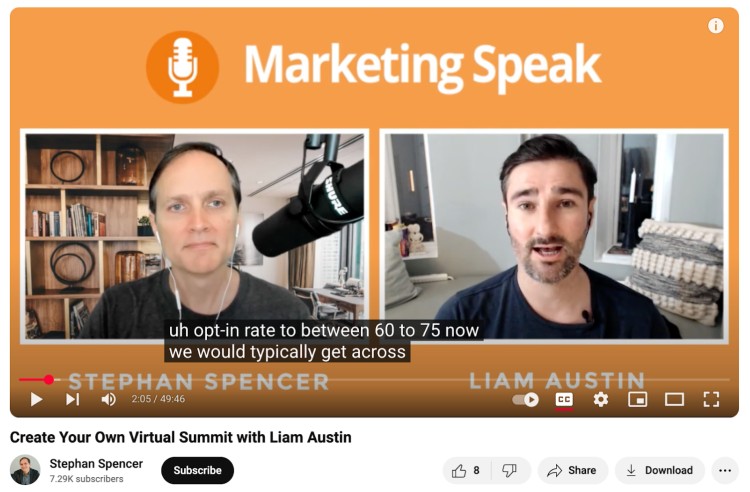
Stuck on what to talk about next? Here are some fresh content ideas to help you get started:
- Teach something useful: Pick one problem your audience is struggling with and break it down step-by-step. For example, “How to grow your email list without spending a dime” or “The easiest way to get better at sales calls.”
- Bust common myths: Help your audience see things differently by tackling common misconceptions in your niche. For instance, “Why more followers doesn’t always mean more sales” or “Why you don’t need a perfect website to start your business.”
- Tell your own story: People love hearing about real experiences. Share a personal story. Maybe a struggle you faced, a mistake you made, or a big win you had. This could be something like “How I turned my side hustle into a full-time business” or “The one lesson I wish I’d learned sooner.”
- Answer your listeners’ questions: Engage your audience by answering questions they’ve asked. This could come from social media, email, or just things your followers are curious about. For example, “How do I find clients when I’m just starting out?” or “What’s the best way to balance work and personal life?”
- Chat with an expert: Bring in someone who knows their stuff and can offer fresh insights. This helps you bring extra value to your listeners while building connections with other pros in your field. You could chat about anything from marketing trends to time management strategies.
- Share client success stories: Show off the success of your clients or customers. This helps build trust and proves your methods work. For example, “How Jane went from zero to six figures in less than a year” or “The strategy that helped John land his first high-ticket client.”
- Talk about trends and hot topics: Stay current by diving into the latest news or trends in your industry. This positions you as someone who’s in the know and can give your audience up-to-date information. For example, “What’s changing in online marketing this year?” or “How AI is transforming content creation.”
What Should Be Considered When Creating Podcast Content?
It’s not just about hitting “record” and talking. Strategic podcast content hits the sweet spot between what your audience cares about and what supports your business goals.
Here’s what to think through:
- Your audience. Figure out who you’re speaking to, what problems they’re dealing with, and what topics they’re already searching for or talking about. Then create content that solves those problems and speaks their language.
- Your offer. Your podcast should naturally lead people toward your paid offer, not by pitching constantly, but by showing them you know your stuff. Ask yourself if the episode connects to what you help with and if it builds trust in your expertise.
- Your episode format. The format should fit both your strengths and your clear goals. Solo episodes are great for building authority. Interviews help you grow your reach and build relationships. Q&As or coaching calls show how you work and build deeper trust.
- Call to action (CTA). Every episode should end with a clear next step. It might be subscribing, grabbing a freebie, joining your list, or booking a call. The key is not leaving people guessing what to do next.
- Repurposing potential. Make sure each episode has enough value to break into multiple forms of content. Think about whether there are soundbites, quotes, or takeaways you can reuse in emails or social posts to stretch your reach without extra work.
Think beyond the podcast. Ensure your podcast marketing plan fuels your whole content system.
Your Podcast Blueprint

A solid podcast content strategy doesn’t have to be complicated. By focusing on consistency, delivering value, and understanding your audience, you can create a branded podcast show that attracts loyal listeners and opens up new opportunities.
The key is showing up and making your content matter every time.
Your free Talks Creator profile is the perfect tool to help you do just that. No more cold pitching or endless networking. With one simple profile, you’ll get discovered by podcast hosts who are looking for guests like you.
Ready to get started? Create your free Talks profile and start landing interviews. Brian Parana landed 12 guest spots in just 4 weeks after signing up. You could be next.

